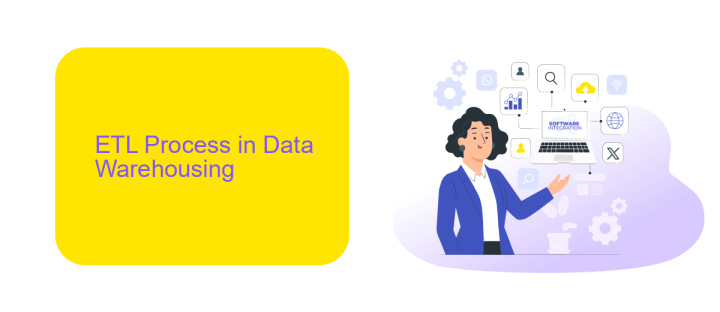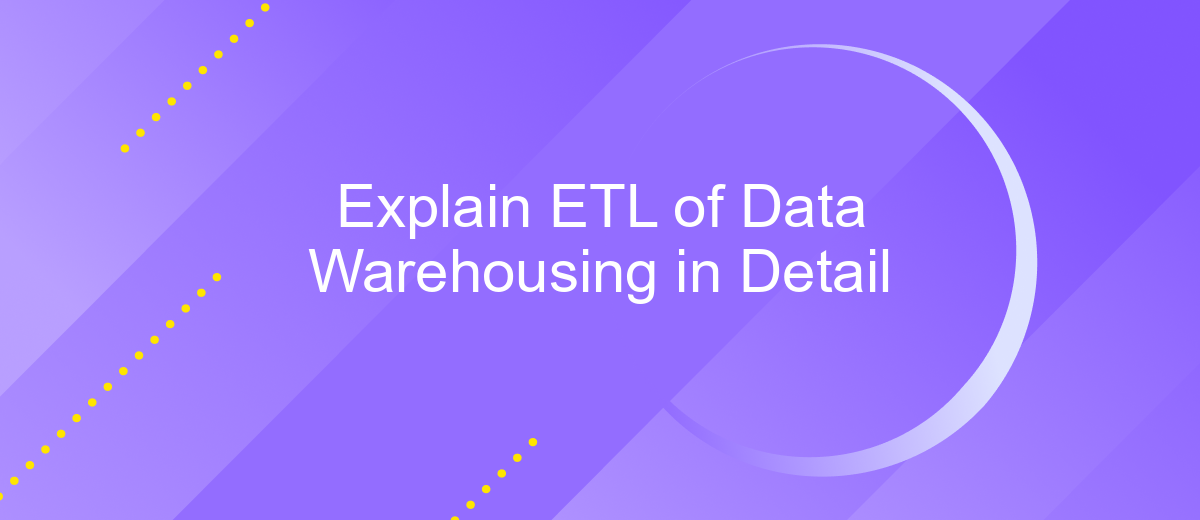Explain ETL of Data Warehousing in Detail
ETL (Extract, Transform, Load) is a crucial process in data warehousing that involves extracting data from various sources, transforming it into a suitable format, and loading it into a data warehouse. This article delves into the intricacies of ETL, explaining each step in detail and highlighting its importance in ensuring data accuracy, consistency, and accessibility for business intelligence and analytics.
Introduction to ETL and Data Warehousing
ETL (Extract, Transform, Load) and Data Warehousing are fundamental concepts in the field of data management and analytics. ETL is the process of extracting data from various sources, transforming it to fit operational needs, and loading it into a data warehouse for analysis and reporting. Data Warehousing, on the other hand, is a centralized repository that allows organizations to store, manage, and analyze large volumes of data from multiple sources.
- Extract: Data is collected from various sources, such as databases, APIs, and flat files.
- Transform: The extracted data is cleaned, enriched, and transformed into a suitable format for analysis.
- Load: The transformed data is loaded into a data warehouse where it can be accessed for business intelligence and reporting.
Using services like ApiX-Drive can simplify the ETL process by automating data integration from multiple sources, reducing manual effort, and ensuring data accuracy. ApiX-Drive provides seamless connectivity to various applications and databases, making it easier to extract, transform, and load data into your data warehouse efficiently.
ETL Process in Data Warehousing

The ETL (Extract, Transform, Load) process in data warehousing involves three critical steps. Firstly, the extraction phase gathers data from various sources such as databases, cloud services, and flat files. This data is often in disparate formats and needs to be collected efficiently. Tools like ApiX-Drive can facilitate this step by integrating different data sources seamlessly, ensuring that data is accurately extracted without manual intervention.
Next, the transformation phase converts the extracted data into a suitable format for analysis. This involves cleaning, filtering, and applying business rules to the data. The goal is to ensure consistency and accuracy. Finally, the load phase involves transferring the transformed data into a data warehouse where it can be accessed for reporting and analysis. This step must be executed carefully to maintain data integrity and optimize performance. Efficient ETL processes are crucial for maintaining the quality and reliability of data in a data warehouse.
Components of ETL Architecture

The ETL (Extract, Transform, Load) architecture is a critical component of data warehousing that ensures data is efficiently processed and stored. This architecture comprises several key components that work together to facilitate data integration and management.
- Data Extraction: This component involves extracting data from various source systems, such as databases, APIs, and flat files. Tools like ApiX-Drive can be used to streamline this process by automating data extraction from multiple sources.
- Data Transformation: Once data is extracted, it undergoes transformation to meet the required format and quality standards. This may include data cleansing, normalization, and enrichment to ensure consistency and accuracy.
- Data Loading: The final component involves loading the transformed data into the target data warehouse. This step ensures that data is available for analysis and reporting, enabling better decision-making.
Each of these components plays a vital role in ensuring the integrity and reliability of the data warehouse. By leveraging tools like ApiX-Drive, organizations can automate and optimize their ETL processes, making data integration more efficient and effective.
Benefits and Challenges of ETL

ETL (Extract, Transform, Load) processes are crucial for data warehousing, offering numerous benefits and posing several challenges. One of the primary advantages of ETL is the ability to consolidate data from multiple sources into a single, unified view, which enhances decision-making and business intelligence. ETL also improves data quality by cleaning and transforming data before loading it into the warehouse, ensuring consistency and accuracy.
However, ETL processes come with their own set of challenges. These include the complexity of data transformations, the need for continuous monitoring and maintenance, and the potential for performance bottlenecks during data extraction and loading phases. Additionally, integrating data from disparate sources can be a daunting task, requiring specialized tools and expertise.
- Data consolidation from multiple sources
- Improved data quality and consistency
- Enhanced decision-making and business intelligence
- Complex data transformations
- Continuous monitoring and maintenance
- Performance bottlenecks
To address these challenges, services like ApiX-Drive can be invaluable. ApiX-Drive simplifies the integration process by providing a user-friendly platform to connect various data sources without the need for extensive coding. This can significantly reduce the complexity and time required for ETL processes, allowing businesses to focus on leveraging their data for strategic insights.
Best Practices for Effective ETL
Effective ETL (Extract, Transform, Load) processes are crucial for data warehousing success. One best practice is to ensure data quality at every stage. Implement data validation and cleansing mechanisms to detect and correct errors early. Regularly monitor and audit data to maintain accuracy and consistency. Additionally, automate as many steps as possible to reduce manual intervention and the chance of human error. Tools like ApiX-Drive can facilitate seamless integrations and automate data transfers between various systems, enhancing efficiency and reliability.
Another key practice is to design ETL processes with scalability in mind. As data volumes grow, your ETL architecture should be able to handle increased loads without performance degradation. Use modular and reusable components to simplify maintenance and updates. Document every step of your ETL processes thoroughly to ensure transparency and ease of troubleshooting. Finally, ensure robust security measures are in place to protect sensitive data during extraction, transformation, and loading stages, adhering to compliance and regulatory standards.
FAQ
What is ETL in data warehousing?
Why is ETL important for data warehousing?
What are the main stages of the ETL process?
How can ETL processes be automated?
What are some common challenges in ETL processes?
Time is the most valuable resource for business today. Almost half of it is wasted on routine tasks. Your employees are constantly forced to perform monotonous tasks that are difficult to classify as important and specialized. You can leave everything as it is by hiring additional employees, or you can automate most of the business processes using the ApiX-Drive online connector to get rid of unnecessary time and money expenses once and for all. The choice is yours!

